First look: Razer’s new DeathAdder V3 Pro gaming mouse gets lighter, faster, and more minimal
Pro gamers who need nothing but the fastest and best-performing high-speed mouse will be pleased with the new DeathAdder V3 Pro’s impressive specifications and upgrades.
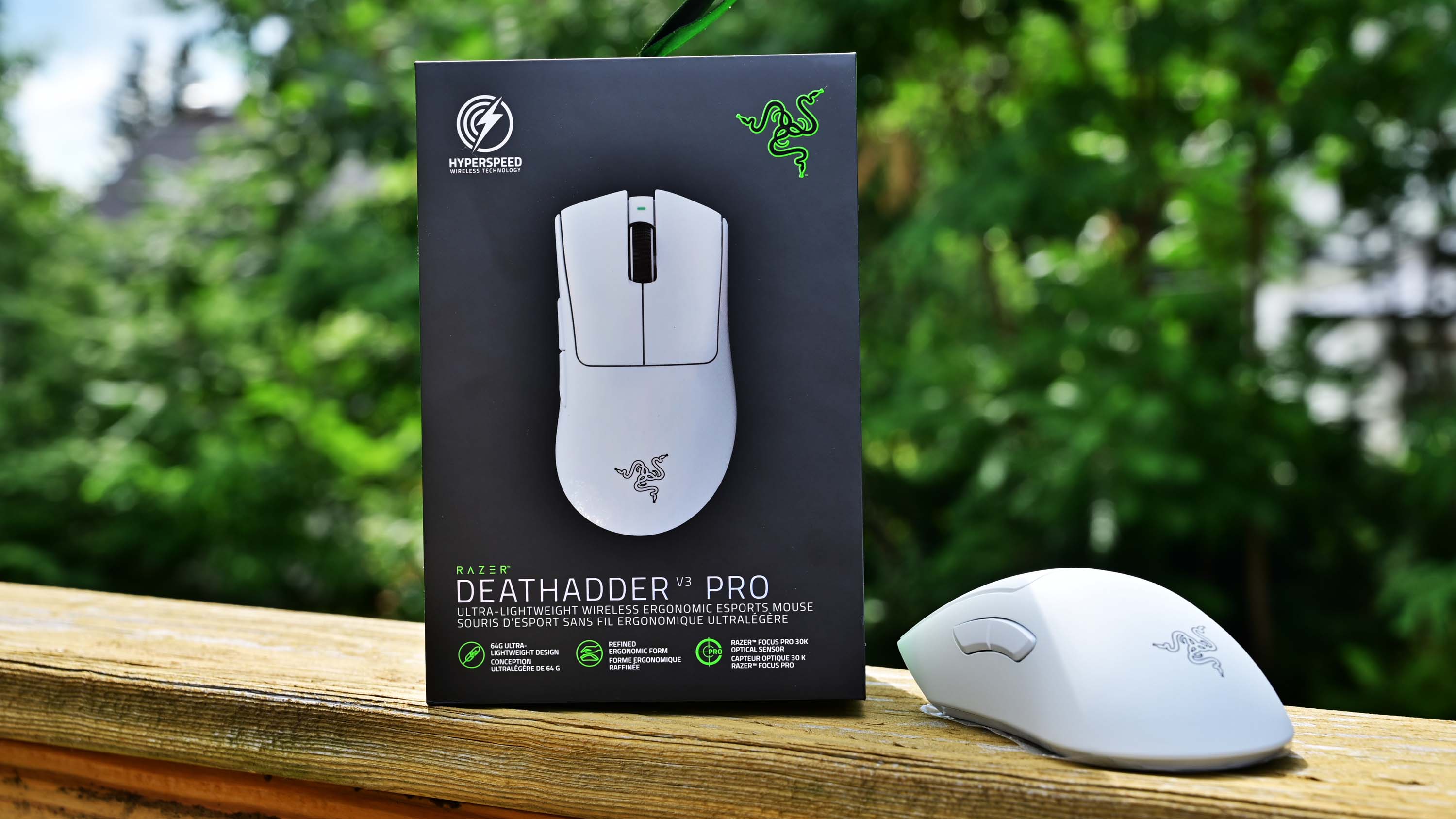
- Razer has announced the new DeathAdder V3 Pro, an upgrade from 2020’s V2 model.
- The pro-level gaming mouse has been redesigned from the ground up to focus on a 28% weight reduction and improved function.
- It uses a new Optical Gen 3 switches and Focus Pro 30K Optical sensor.
- The DeathAdder V3 Pro is also compatible with Razer’s new 4,000Hz HyperPolling dongle (sold separately, $29.99) for extremely low latency.
- DeathAdder V3 Pro is now available for $149.99 or $164.99 with bundled Razer HyperPolling Wireless Dongle.
Casual gamers need not apply. That’s the word for the new DeathAdder V3 Pro from Razer, built for speed with the purest tech focused on gaming with little flash.
The new flagship gaming mouse is a massive upgrade from DeathAdder V2 Pro, which we called the “perfect wireless gaming mouse” back in 2020. Indeed, Razer has sold over 15 million Razer DeathAdders, making it the most successful gaming mouse ever.
So, what’s improved with DeathAdder V3 Pro? Turns out, a lot.
In terms of the overall design, Razer is going minimal and focusing on weight reduction while also adding the best technologies for the best gaming performance.
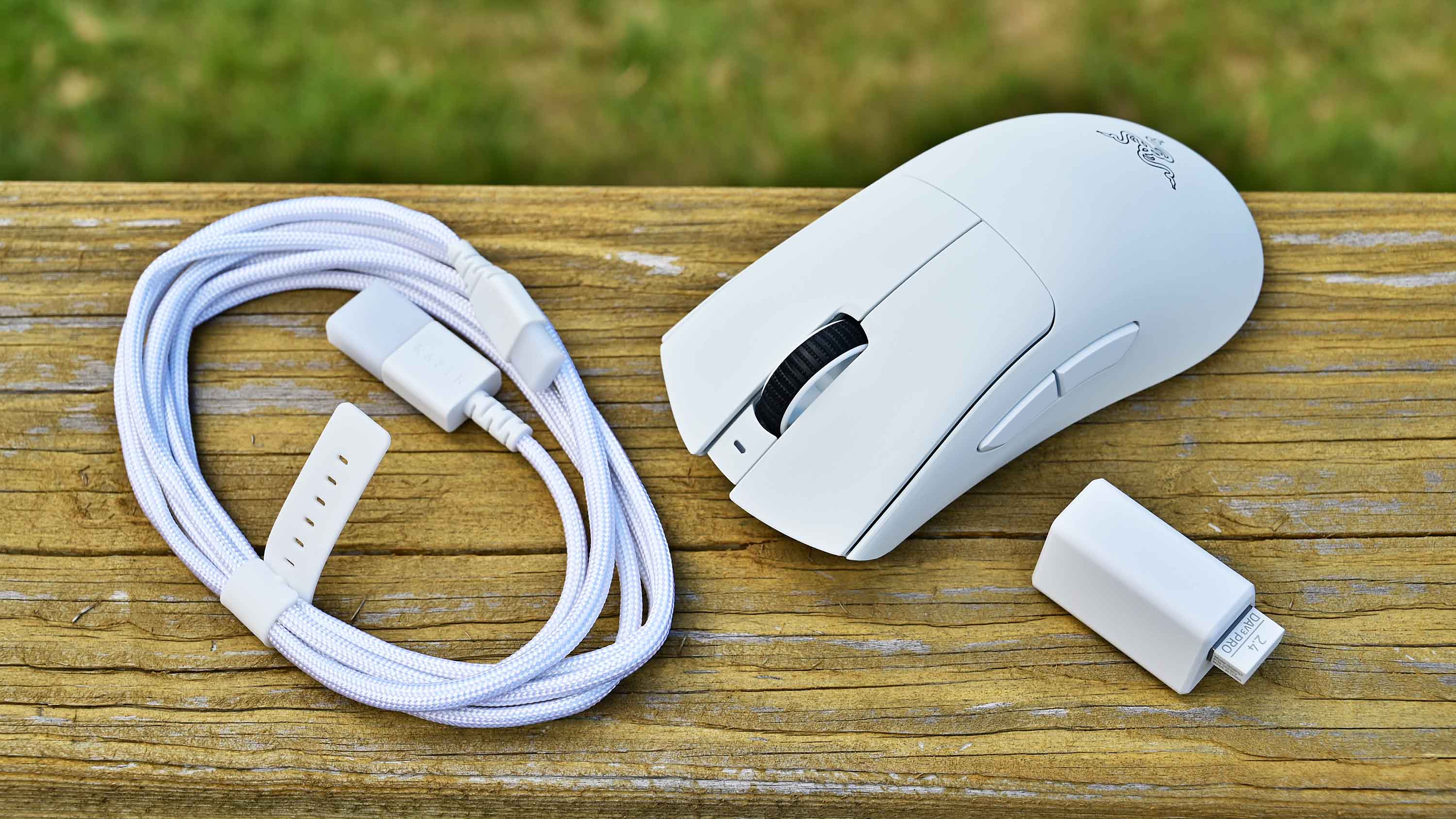
Compared to DeathAdder V2 Pro, V3 cuts the weight from 88 to 63 grams — about a 28.5% reduction, which resulted in a “full redesign” of the mouse. To get there, the team shifted from a unibody shell to a split key cover design, combining the power and DPI buttons into one, and this is a first — the removal of all Chroma RGB. No Chroma RGB seems almost sacrilege for a Razer product, but the company was adamant about balancing functionality and weight design.
Even the included (and optional) grip tape is now pre-cut to help keep the weight down.
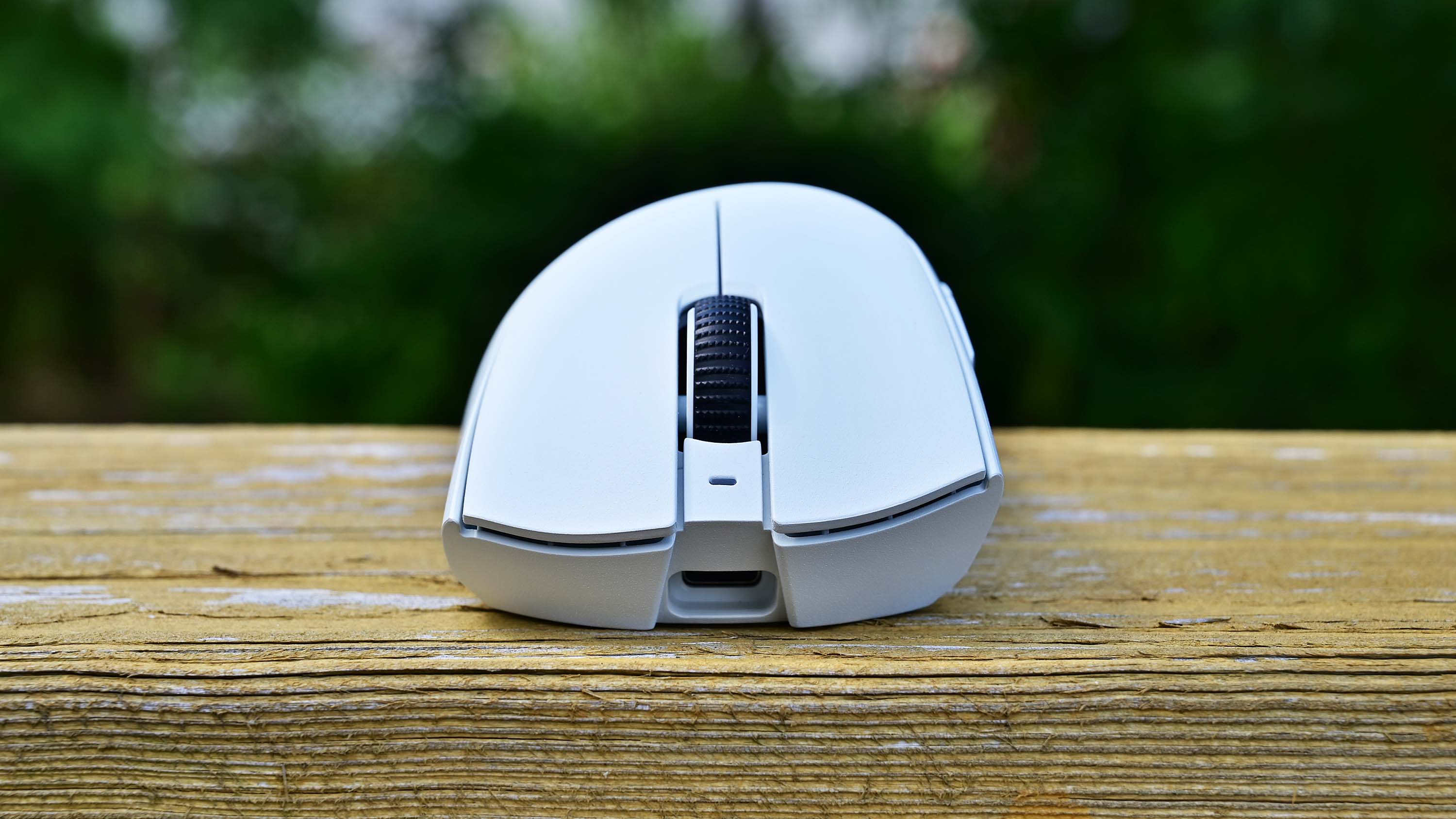
For the redesign itself, it’s all very subtle but based on pro gamer feedback. Compared to V2, there’s now reduced button flare, more subtle finger grooves, higher scroll wheel, higher side buttons, better surface material, added ring finger ledge, split-key cover (better tactility), and improved “natural pronation support” (fancy talk for a more comfortable grip that aligns more closely with your palm).
Get the Windows Central Newsletter
All the latest news, reviews, and guides for Windows and Xbox diehards.
All the buttons were reduced from 8 to just 6 (sometimes by combining), 5 of which are still programmable via Razer Synapse.
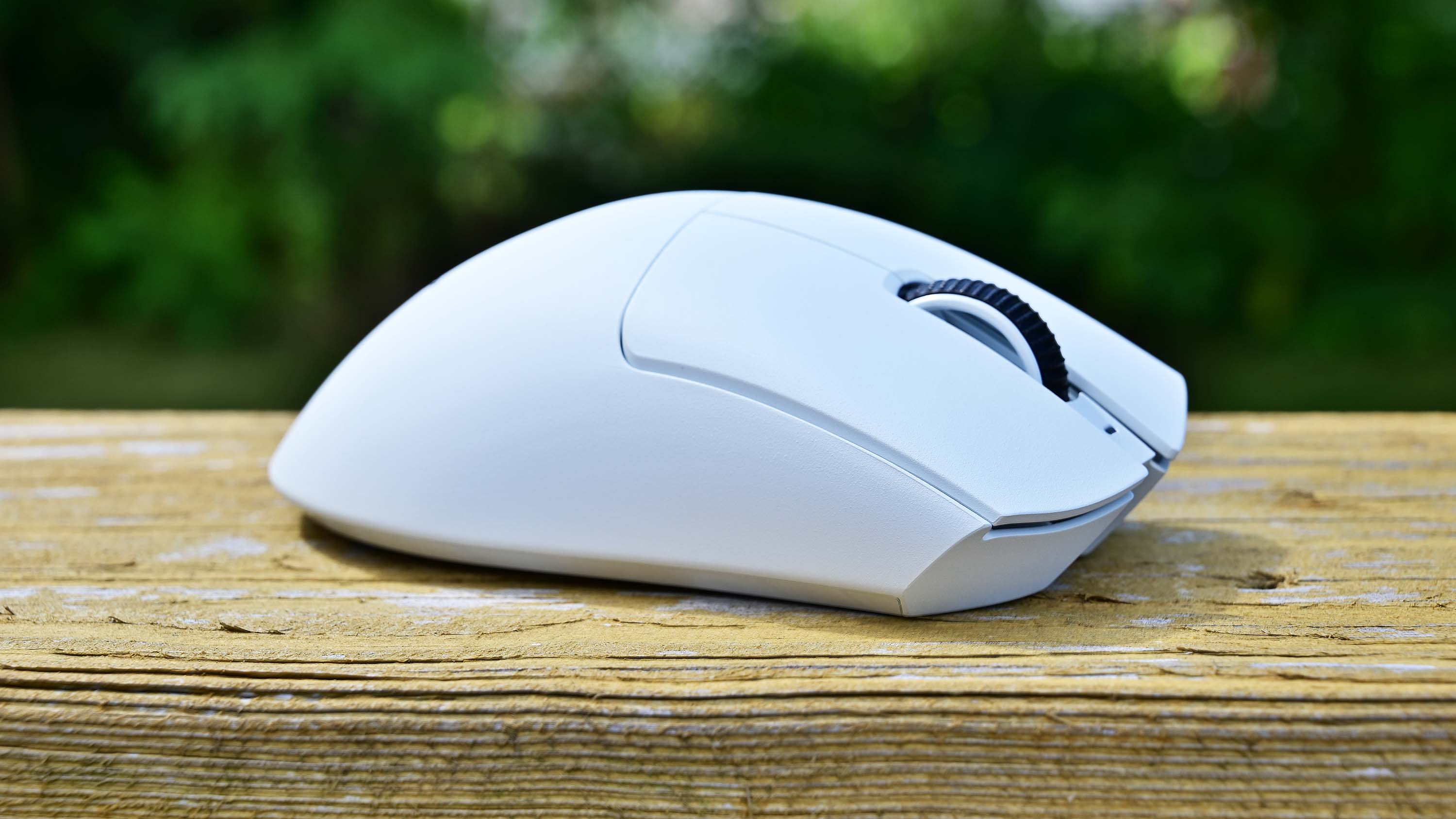
Let’s also hear it for the continued death of micro-USB as DeathAdder V3 Pro adopts Type-C to recharge (the 2.4GHz HyperSpeed dongle is still Type-A). Even Bluetooth was removed, likely due to it being inferior to wired and 2.4GHz. That 2.4GHz HyperSpeed dongle also has multi-device support so that you can connect your wireless Razer keyboard (like the new DeathStalker V2 Pro, which I love) and this mouse with just one dongle instead of two.
While the DeathAdder V3 Pro obviously comes in pure white, for those who are more traditional, you can also get it in black, just as you’d expect. Interestingly, the white version is 1 gram heavier.
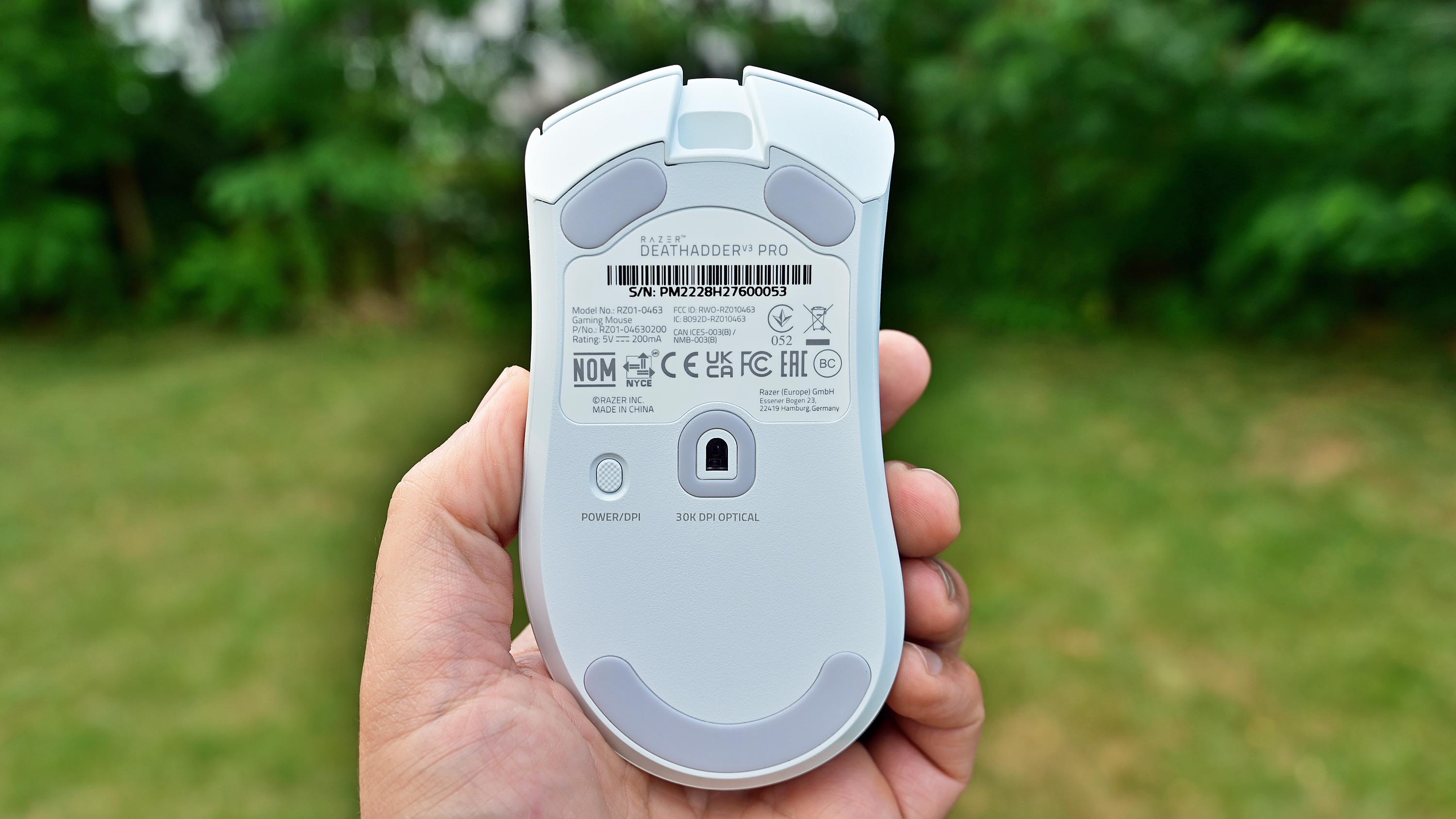
Getting to the tech itself, the DeathAdder V3 Pro bumps the sensor to a Focus Pro 30K Optical, with up to an absurd 30,000 DPI. Acceleration goes from 50G to 70, with resolution accuracy improving slightly to 99.8 percent (up from 98.6). That sensor works on glass surfaces (at least 2mm thick) and all matt types and has longer battery life.
Indeed, Razer claims that DeathAdder V3 Pro’s battery life has jumped from 70 to 90 hours because of that new sensor.
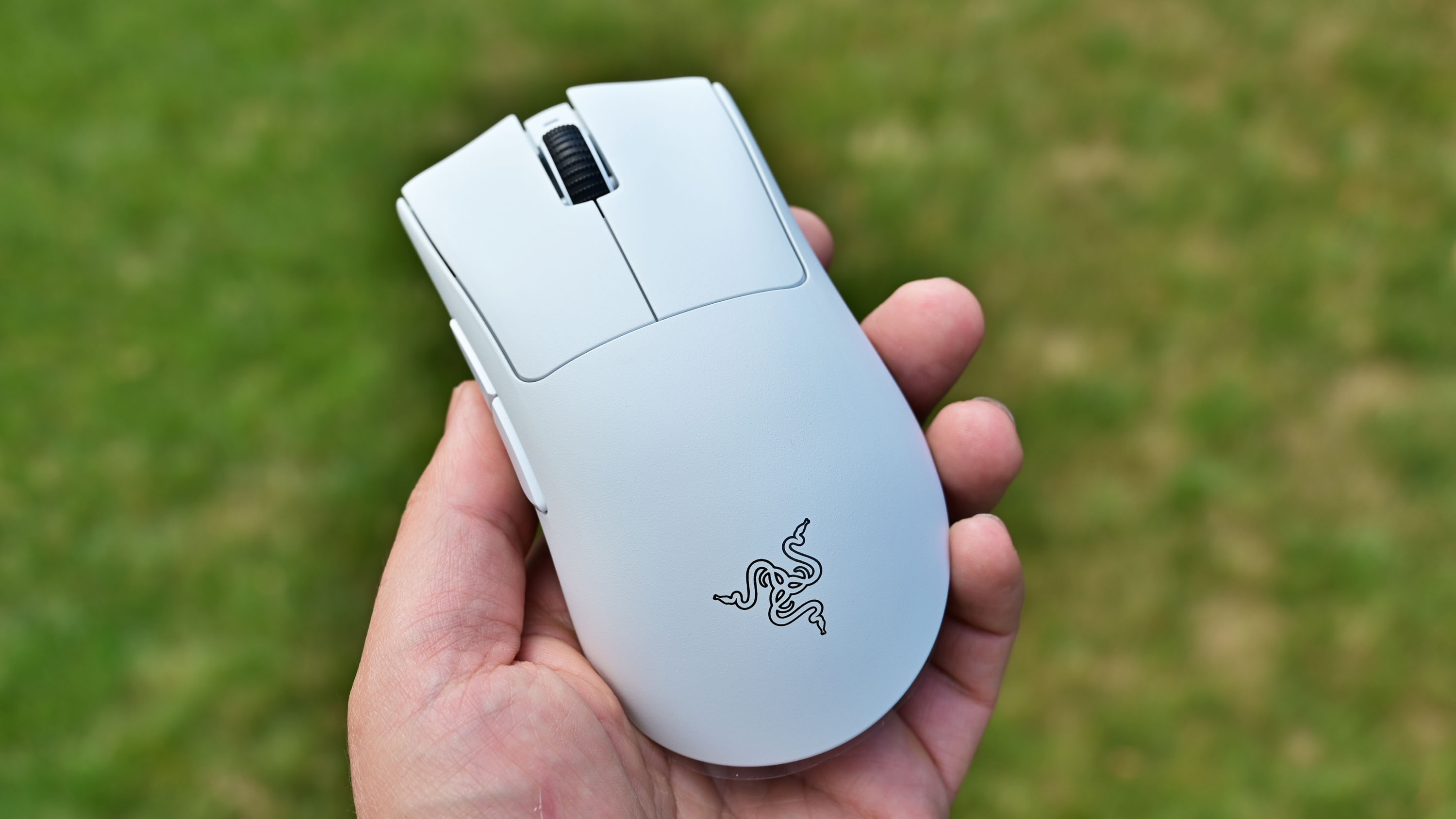
And everyone’s favorite buzzword, AI, is also here. Razer notes that the DeathAdder V3 Pro utilizes Smart Tracking (helps to auto-calibrate across different surfaces), Motion Sync (enables higher responsiveness and more consistent tracking), and Enhanced Asymmetric Cut-off (individually set lift-off-and landing distance).
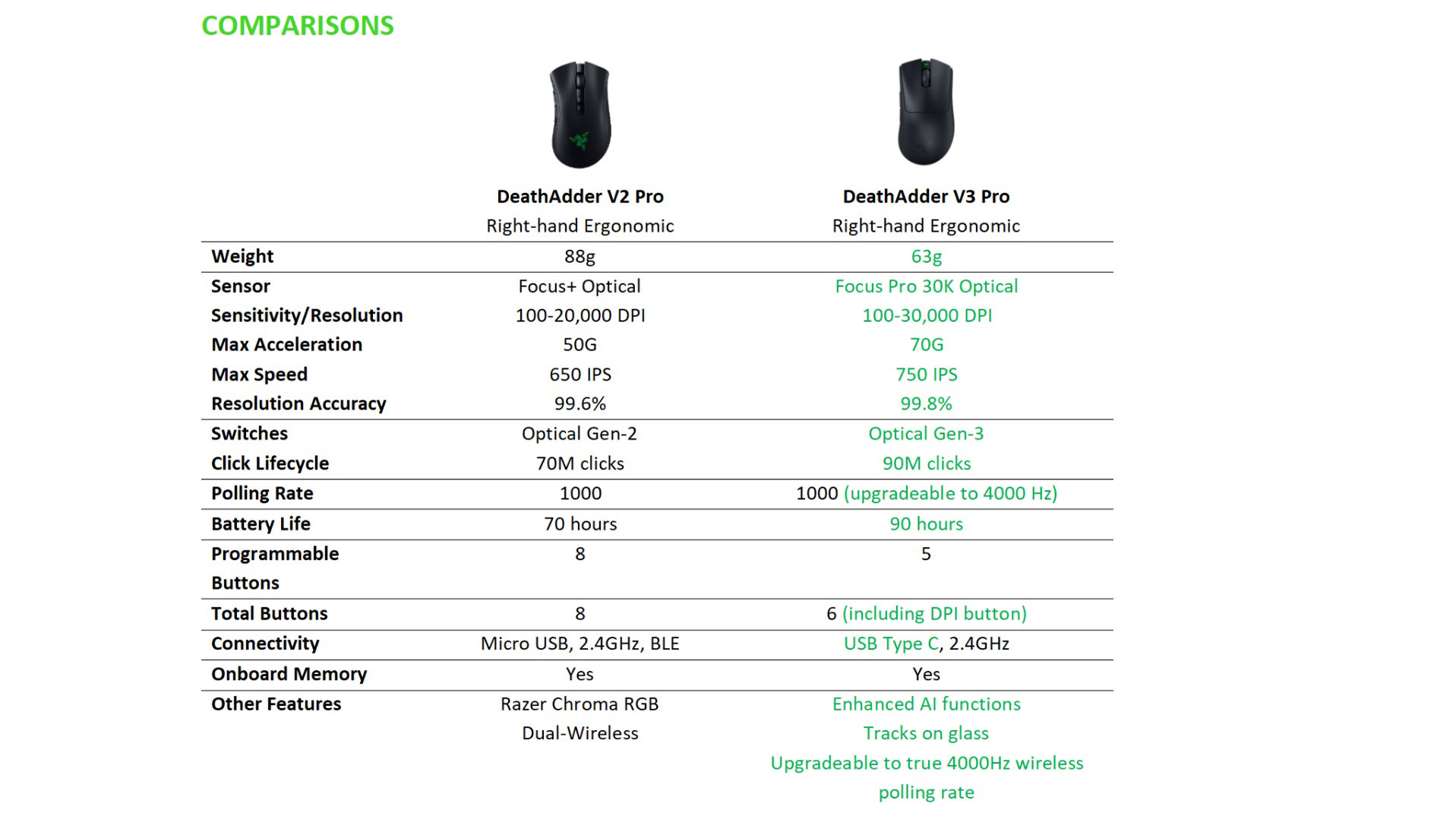
The mouse’s switches are now Optical Gen 3 with no debounce delay, improved tactility, no double-clicking issues, and a 90 million click lifecycle (up from 70 million).
This mouse supports Razer’s new HyperPolling Wireless Dongle for those who live on the edge. Instead of a “mere” 1,000 Hz polling, you can now get a wild 4,000 Hz for extreme low-latency (0.25ms) performance. Most gamers won’t need that much performance (plus Razer recommends at least 144Hz refresh on your monitor), but for those who treat gaming as a serious hobby or even a job, that’s your best wireless bet.
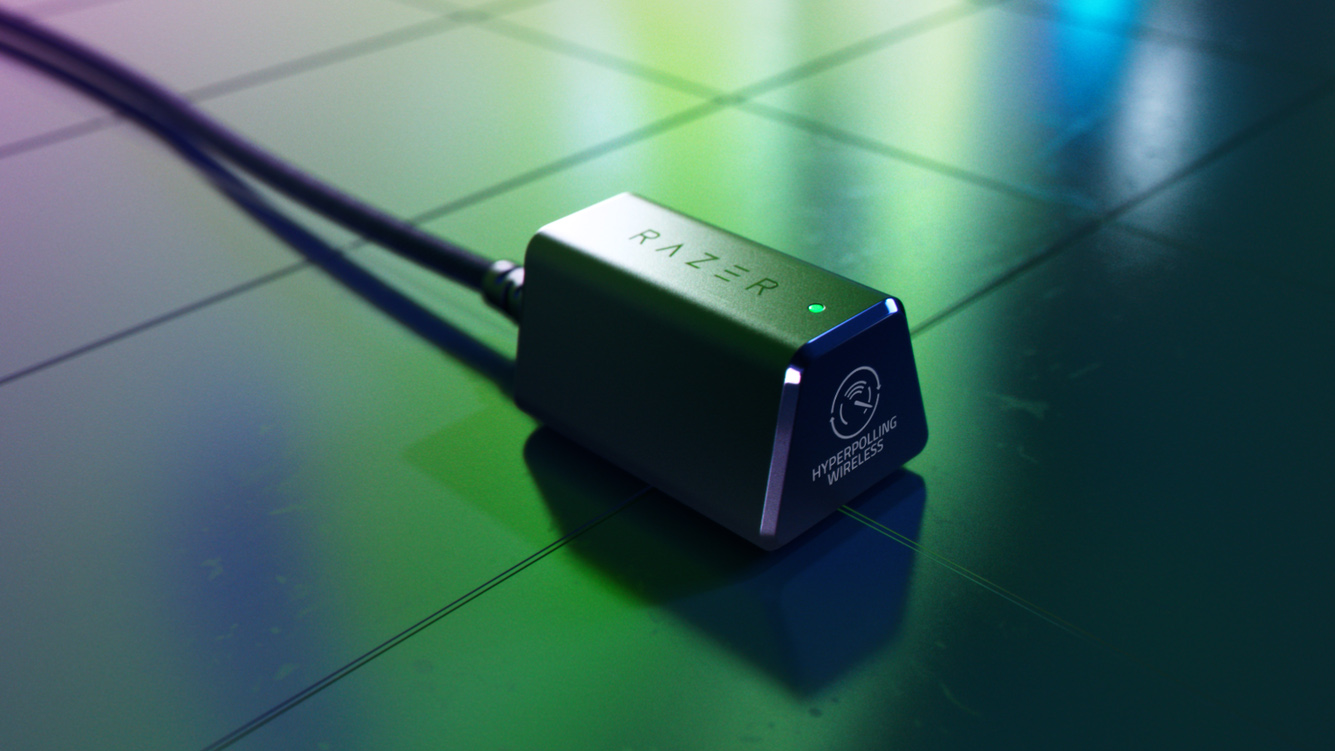
Razer DeathAdder V3 Pro: Thoughts, pricing, and availability
So, how is it all? I’m far from a pro gamer, but in using the DeathAdder V3 Pro for the last few days, I can attest that it is ludicrously light, has excellent clicking, and feels like a killer gaming mouse that can be used for hardcore gaming or day-to-day computing. It's fast and smooth, and the ergonomics feel spot on.
I think serious gamers need a serious mouse, and the DeathAdder V3 Pro checks all the right boxes.
The Razer DeathAdder V3 Pro is now shipping from Razer.com and affiliated partners. The retail price is $149.99, which includes the mouse, dongle, Type-C cable, Wireless USB dongle + USB dongle adapter, and grip tape.
The 4,000 Hz Razer HyperPolling Wireless Dongle is also available separately for $29.99 and is compatible with the new Viper V2 Pro (Razer will also give you a discount on that dongle if you previously purchased that mouse).
Even better, if you want to buy the HyperPolling dongle and DeathAdder v3 Pro simultaneously, Razer is discounting the total price to just $164.99 (instead of $179.98).
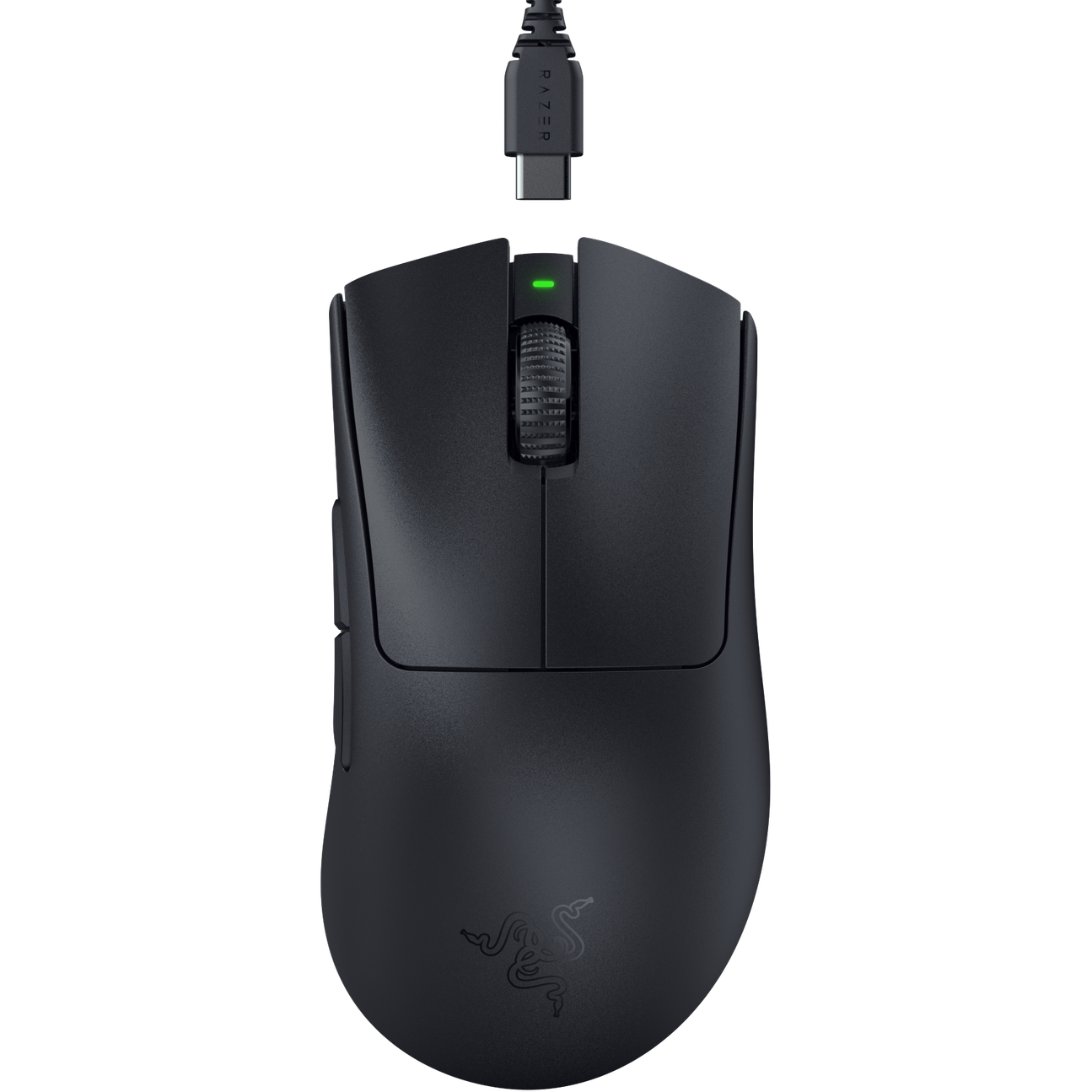
Razer's flagship pro gaming mouse has been updated for 2022. The DeathAdder V3 Pro ($149.99) is now available with a new 30K Optical sensor, Gen 3 switches, a much lighter chassis, and it supports Razer's new 4,000 Hz HyperPolling Wireless Dongle technology, which is bundled at a discount making this one of the best gaming mice in the biz.

Daniel Rubino is the Editor-in-chief of Windows Central. He is also the head reviewer, podcast co-host, and analyst. He has been covering Microsoft since 2007 when this site was called WMExperts (and later Windows Phone Central). His interests include Windows, laptops, next-gen computing, and wearable tech. He has reviewed laptops for over 10 years and is particularly fond of 2-in-1 convertibles, Arm64 processors, new form factors, and thin-and-light PCs. Before all this tech stuff, he worked on a Ph.D. in linguistics, performed polysomnographs in NYC, and was a motion-picture operator for 17 years.
